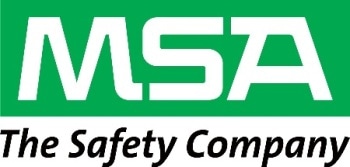With recoverable reserves of 419 million barrels, Terra Nova has become the second leading offshore oilfield in Canada.
Suncor (38%), ExxonMobil (19%), Statoil (15%), Husky (13%), Murphy (10%), Mosbacher (4%) and Chevron (1%) are the owners. There were two major challenges for Terra Nova FPSO:
- During extreme weather, infrared gas detection sensors experienced fault conditions and false alarms were triggered.
- The reservoir was starting to sour and generate H2S, a fatal toxic gas.

A multi-disciplinary team that included personnel from instrumentation, operations, risk analysis and process safety, was given the responsibility to come up with a suitable solution.
The Challenge
Poor reliability, slow detection and high false alarm rates are some of the problems that have weighed down the offshore oil and gas industry when handling gas leak detection. The Terra Nova FPSO is a remote facility with limited egress. Thus, any hazardous gas release in the facility needs blow down of inventory, complete production shutdown and isolation of electrical equipment. However, shutting down the plant in this way has damaging effects on plant equipment such as gas compressors and generators. Before upgrading, false alarms from gas detectors caused extended outages, damage to process equipment and production deferments of 50,000-100,000 barrels annually.
Evaluation of Gas Detection Technologies

A comprehensive analysis of the facility, based on CFD modeling, was carried out. In aggregate, 1,480 gas leak scenarios were simulated and employed in the evaluation, detector selection process, optimization and overall design of the upgrade to the gas detection system. To verify and optimize performance of the gas detection system, a varied and complex set of leak scenarios was simulated. It took 2 to 3 days to complete each simulation, which included complicated mathematical models, integrating various variables such as the gas leak properties, ventilation conditions and geometry of the process modules on the vessel.
Earlier in February 2011, atrial laser-based gas detector was tested at the TerraNova onshore distributed control system (DCS) simulator. Over a span of two weeks, rigorous performance tests were performed on the device under a wide range of conditions that were known to create problems for the existing IR detectors.
The Solution
The offshore trial successfully lasted for two years (2011-2013), following which a decision was made by Suncor to replace all existing IR gas detectors with 158 Senscient ELDS™ laser-based open path gas detectors. Significant planning was needed for retrofitting the FPSO while it was on location, in full operation. A complete work package was developed which offered a plan for the decommissioning of the existing IR detectors, training of personnel and installation of the new laser-based detectors.
A review of data has documented significant improvement in production, operations and safety. On the crucial measure of safety performance, Terra Nova was able to accomplish:
- An improvement in the robustness and reliability of the overall gas detection system
- A reduction in the exposure of operations personnel to hazardous locations and gases
- A reduction in maintenance requirement
- Earlier warning for preventative and remedial action
- An increase in gas leak detection coverage
- An elimination of false alarms

The Outcome
After the upgrade to the laser-based sensors, there has not been a single instance of false gas detection. The upgrade has led to an annual positive financial impact of $5 to 10 million to production operations only from the increased uptime achieved through the elimination of false alarms.
To sum up, the upgrade of gas detection technology on the Terra Nova FPSO was able to accomplish the following results:
- Increased production by 50,000 - 100,000 barrels annually through the elimination of false alarms and down time
- Considerable reduction in maintenance requirement
- Remarkable improvement in safety

This information has been sourced, reviewed and adapted from materials provided by MSA - The Safety Company.
For more information on this source, please visit MSA - The Safety Company.